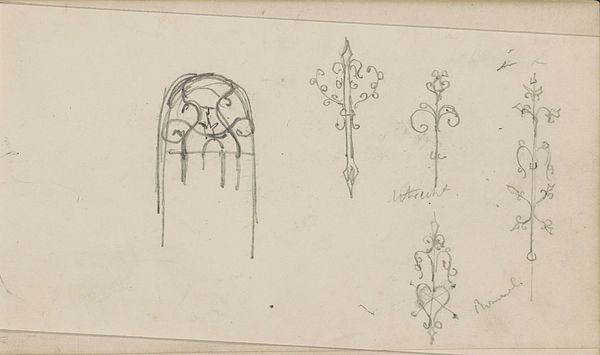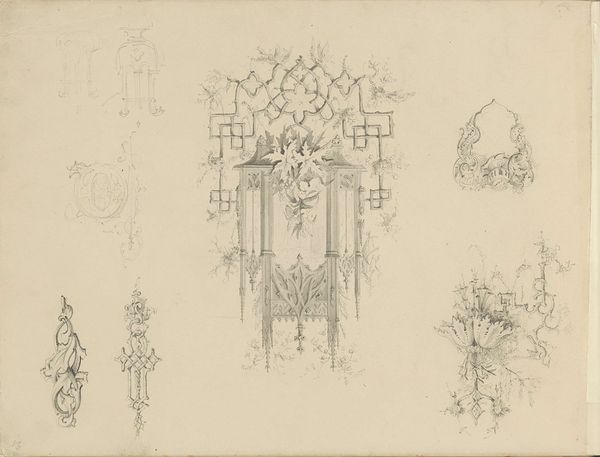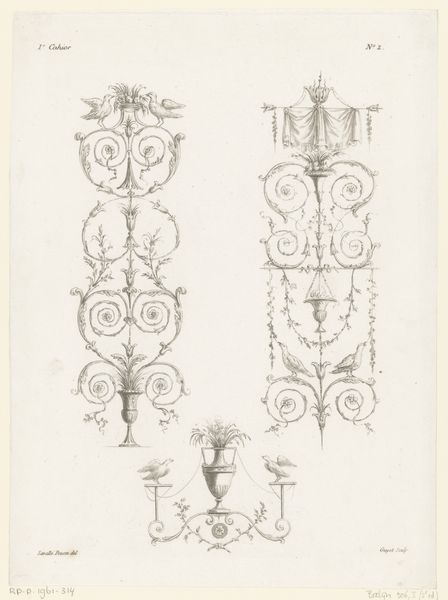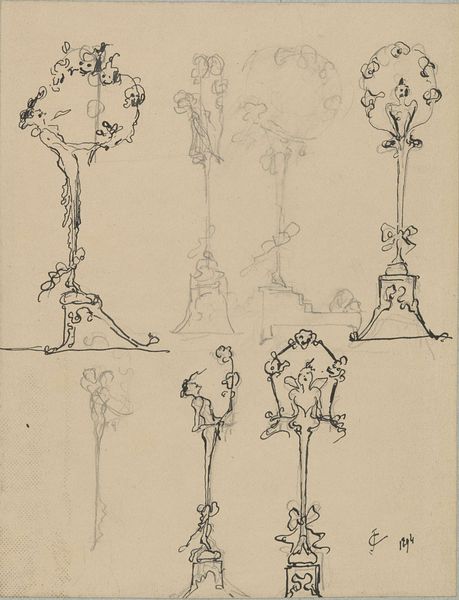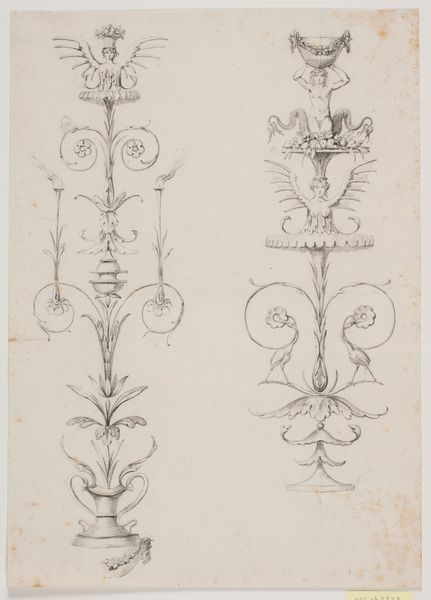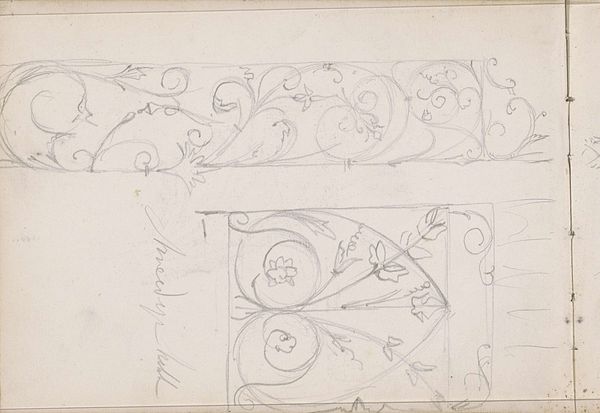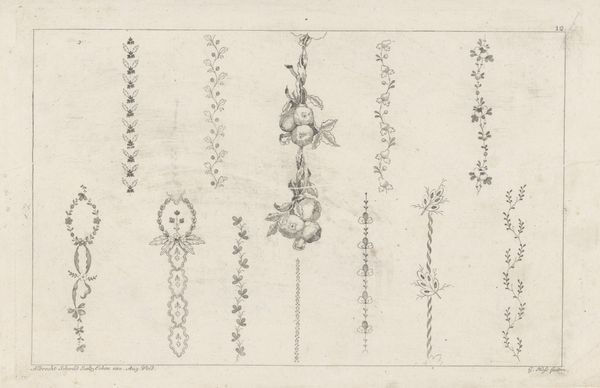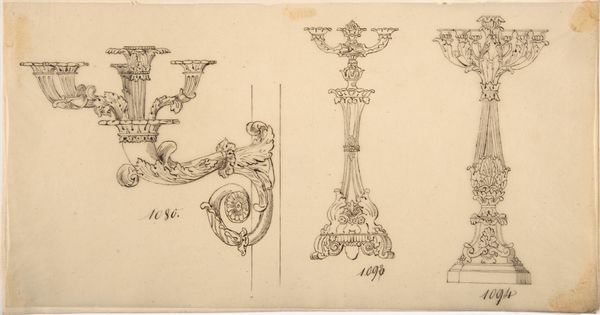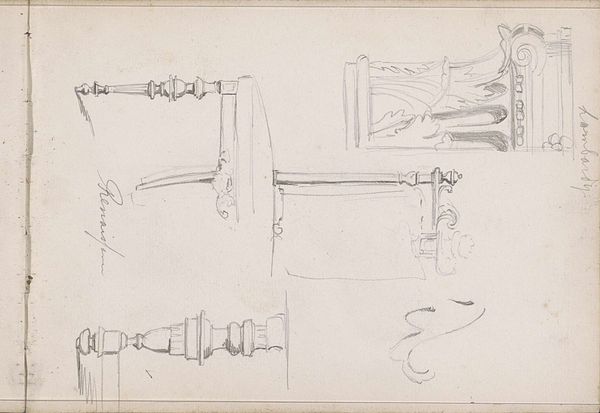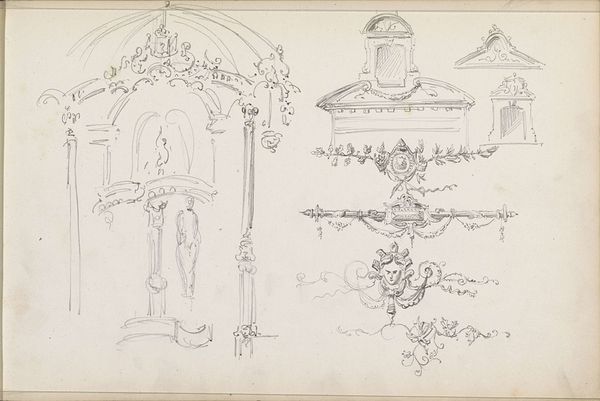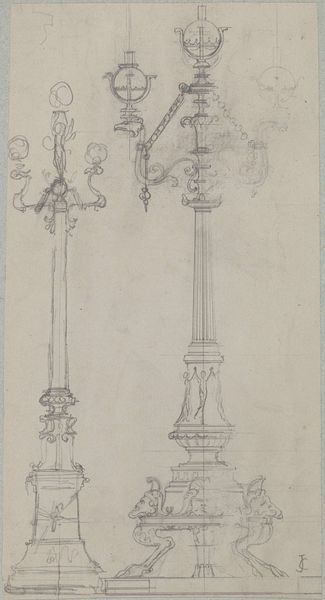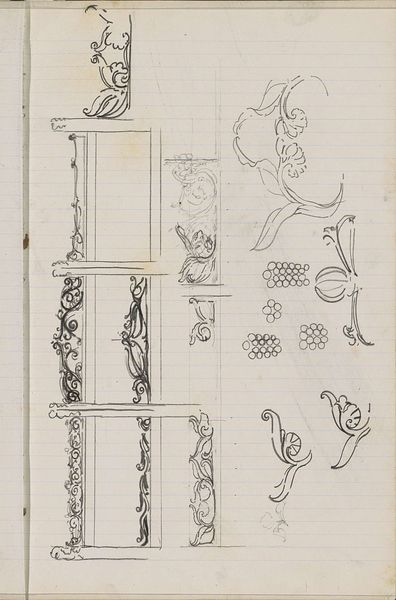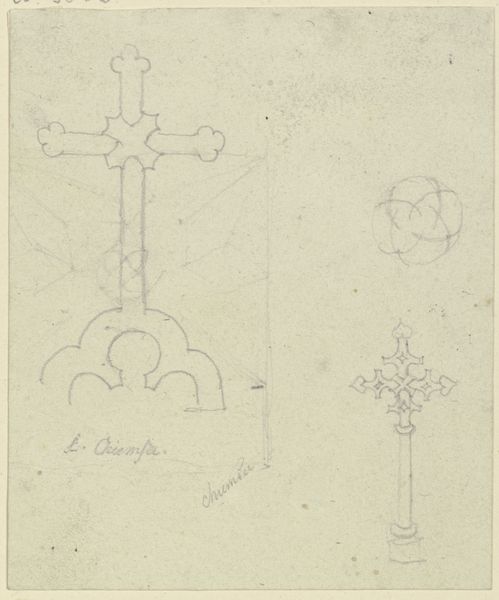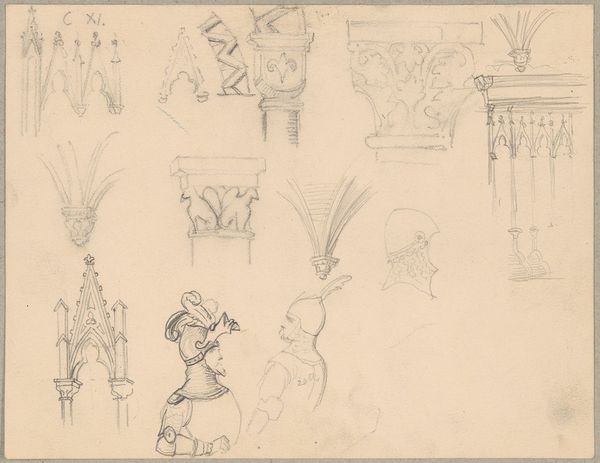
drawing, pencil
#
drawing
#
imaginative character sketch
#
light pencil work
#
personal sketchbook
#
idea generation sketch
#
sketchwork
#
geometric
#
pencil
#
sketchbook drawing
#
storyboard and sketchbook work
#
fashion sketch
#
sketchbook art
#
initial sketch
Copyright: Rijks Museum: Open Domain
Editor: This drawing, "Kerkornamenten met blad- en bloemmotieven," or "Church Ornaments with Leaf and Flower Motifs," was created between 1866 and 1868 by Isaac Gosschalk, using pencil. They almost look like sketches of wrought ironwork... What do you see in these ornamental designs? Curator: What strikes me are these repeating, almost skeletal, floral motifs. Consider the context: 1860s Europe, a period of rapid industrialization coupled with burgeoning religious revivalism. Are these designs merely decorative, or could they be read as a commentary on the fragility of faith in a time of societal upheaval? Notice how the floral elements, traditionally symbols of life and growth, appear constrained, almost imprisoned within these rigid geometric structures. What could that signify? Editor: That's interesting. I hadn't considered the societal context, just the aesthetic quality. Do you think the fact they're on a sketchbook page makes them somehow more personal? Curator: Precisely. The intimacy of the sketchbook format invites us to consider Gosschalk's own internal dialogues. Were these designs meant to adorn actual churches, thereby imposing a specific aesthetic ideology onto the community? Or were they, perhaps, a more personal exploration of the tensions between tradition and modernity, the sacred and the secular, worked out in private? Think of the power structures inherent in dictating religious aesthetics, particularly concerning the roles of marginalized communities within the church itself. Editor: So, you're suggesting they might be more subversive than they appear at first glance. Curator: Exactly! Art rarely exists in a vacuum. Even seemingly innocuous floral sketches can become powerful statements when viewed through the lens of historical and social awareness. This perspective reframes how we understand art's role in reflecting—and potentially challenging—dominant ideologies. Editor: I'll never look at a flower the same way again! It really helps to understand the deeper layers with these art pieces. Curator: Indeed, art becomes a window into understanding ourselves and our place within a complex world, inspiring dialogues that reverberate far beyond the canvas or the page.
Comments
No comments
Be the first to comment and join the conversation on the ultimate creative platform.
